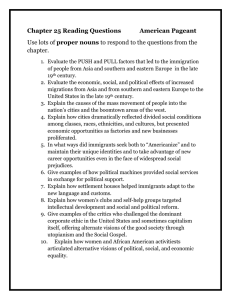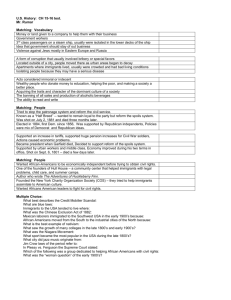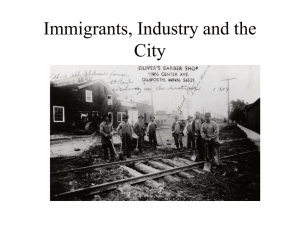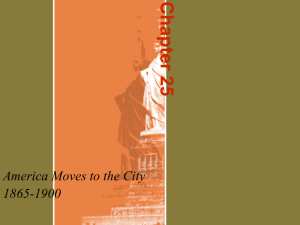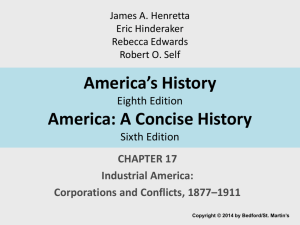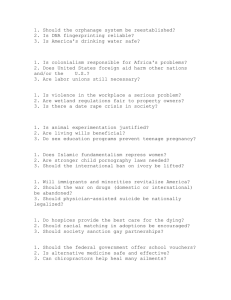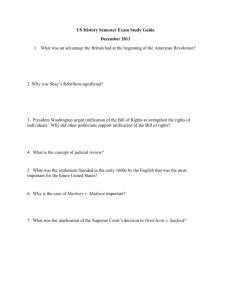Chapter 28 Summary While the population of the United States more
advertisement
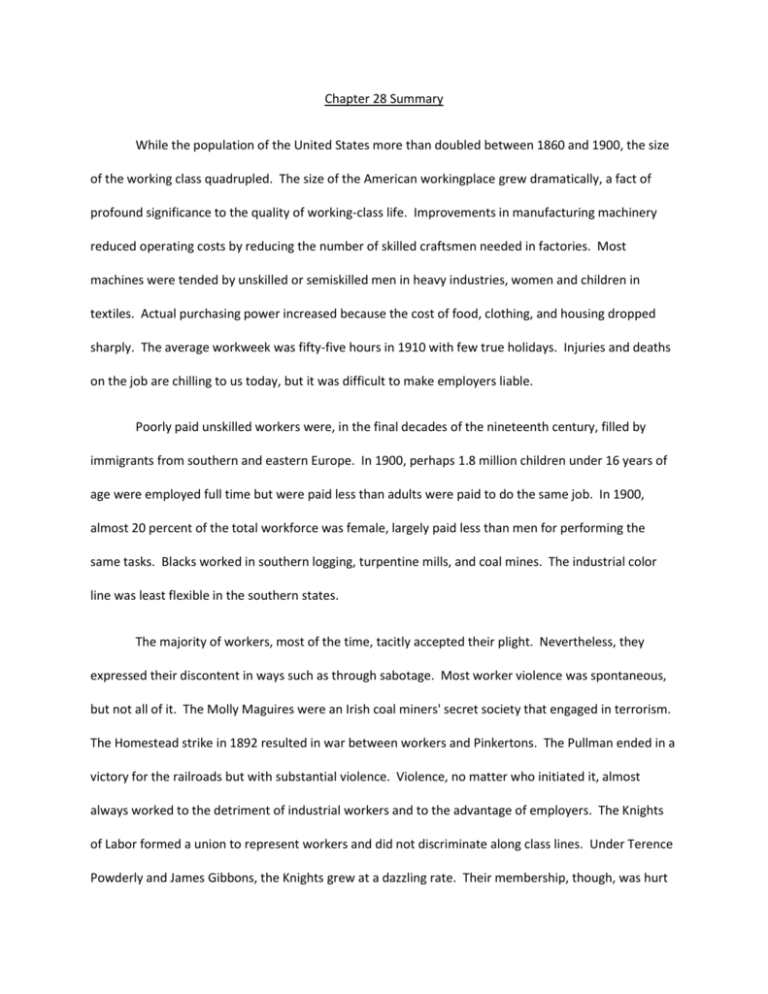
Chapter 28 Summary While the population of the United States more than doubled between 1860 and 1900, the size of the working class quadrupled. The size of the American workingplace grew dramatically, a fact of profound significance to the quality of working-class life. Improvements in manufacturing machinery reduced operating costs by reducing the number of skilled craftsmen needed in factories. Most machines were tended by unskilled or semiskilled men in heavy industries, women and children in textiles. Actual purchasing power increased because the cost of food, clothing, and housing dropped sharply. The average workweek was fifty-five hours in 1910 with few true holidays. Injuries and deaths on the job are chilling to us today, but it was difficult to make employers liable. Poorly paid unskilled workers were, in the final decades of the nineteenth century, filled by immigrants from southern and eastern Europe. In 1900, perhaps 1.8 million children under 16 years of age were employed full time but were paid less than adults were paid to do the same job. In 1900, almost 20 percent of the total workforce was female, largely paid less than men for performing the same tasks. Blacks worked in southern logging, turpentine mills, and coal mines. The industrial color line was least flexible in the southern states. The majority of workers, most of the time, tacitly accepted their plight. Nevertheless, they expressed their discontent in ways such as through sabotage. Most worker violence was spontaneous, but not all of it. The Molly Maguires were an Irish coal miners' secret society that engaged in terrorism. The Homestead strike in 1892 resulted in war between workers and Pinkertons. The Pullman ended in a victory for the railroads but with substantial violence. Violence, no matter who initiated it, almost always worked to the detriment of industrial workers and to the advantage of employers. The Knights of Labor formed a union to represent workers and did not discriminate along class lines. Under Terence Powderly and James Gibbons, the Knights grew at a dazzling rate. Their membership, though, was hurt by the Haymarket tragedy. Samuel Gompers formed the American Federation of Labor for skilled workers with the sole goal of "bread and butter": higher wages, shorter hours, and better working conditions. He was hated by employers but highly successful. Between 1880 and 1910, about 8.4 million "new immigrants" of southern and eastern European origin arrived in the United States, forced to leave because of population booms and cheaper American goods. American manufacturers and railroaders encouraged immigration because they would do the dirty, menial jobs that others shunned. The "old immigrants" of pre-1880 America had their own reasons for coming to the United States. Because of their religion, Irish Catholics were discriminated against but exhibited a bombastic patriotism. With the transcontinental railroad, Chinese immigration increased as did the hostility toward them. German immigrants were generally better off than other immigrants of the period. They and the Scandinavians encountered less discrimination than other settlers. Sephardic Jews assimilated easily into middle- and upper-class society before the Civil War. Jews from Eastern Europe were altogether different and were fleeing from brutal, state-abetted persecution in Russia and Romania.
